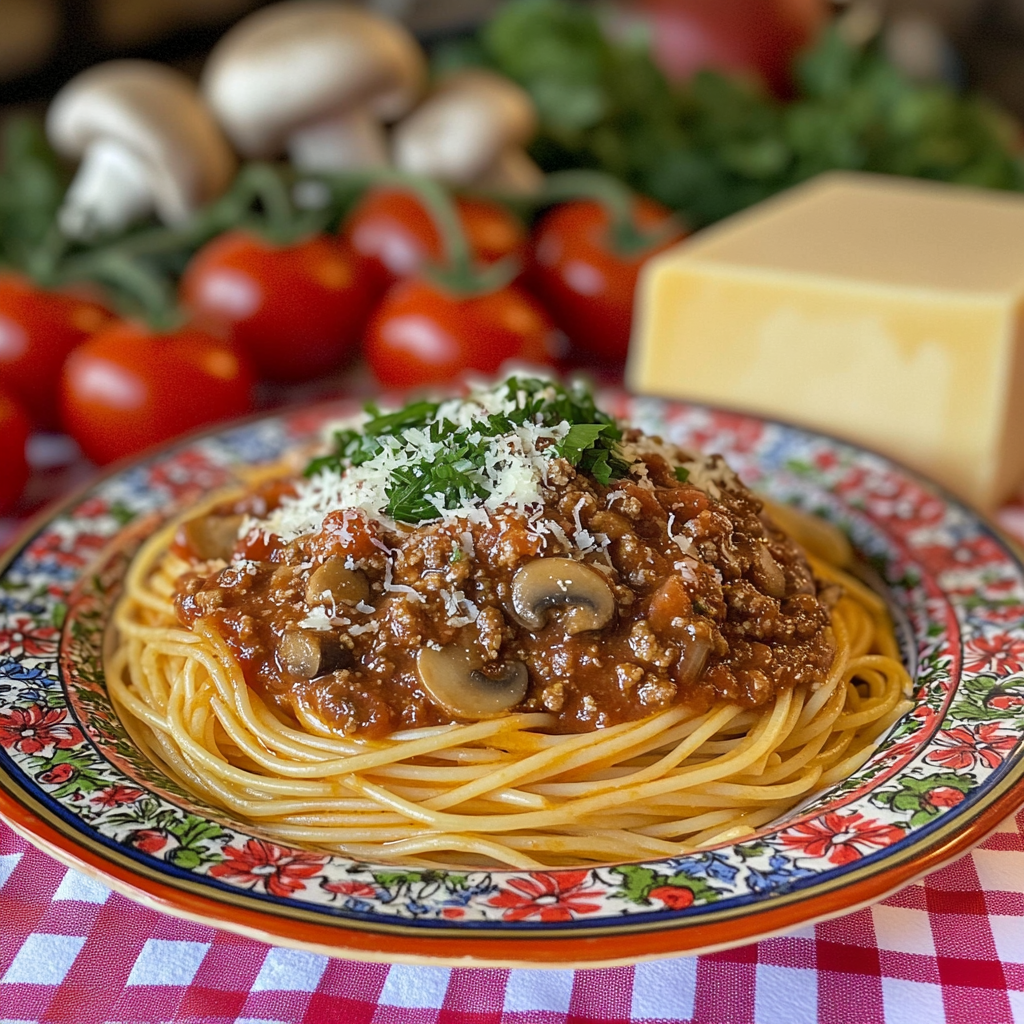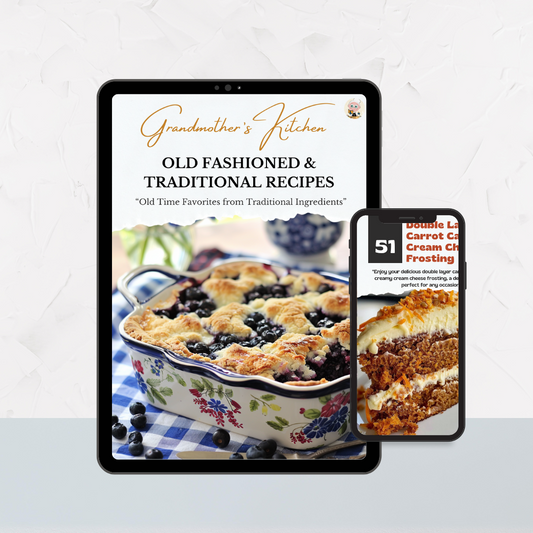Spaghetti Sauce with Ground Beef or Turkey

Share
One of the easiest meals to prepare when company is coming is spaghetti with a homemade sauce. I’ve found that making the sauce a day ahead not only makes the day of the gathering less stressful but also allows the flavors to develop and deepen overnight. While it’s best to cook the pasta fresh, the sauce will benefit from that extra time to meld all the flavors together. Whether you’re having friends over for a casual dinner or hosting a family gathering, this spaghetti sauce is sure to please everyone at the table. Plus, knowing that most of the work is done ahead of time lets you relax and enjoy the company of your guests.
Did You Know?
Nutritional Benefits of Ground Turkey vs. Ground Beef: Ground turkey and ground beef are both excellent sources of protein, but they have different nutritional profiles. Ground turkey is generally leaner and contains fewer calories and saturated fats, making it a healthier option for those looking to reduce fat intake. It also provides essential nutrients like iron, zinc, and B vitamins. On the other hand, ground beef offers a richer flavor and is higher in iron and vitamin B12, which are vital for red blood cell production and neurological function. Choosing between the two depends on your dietary preferences and health goals.
Yield: 6 servings
Ingredients:
- 1 pound ground beef or ground turkey
- 1 tablespoon olive oil
- 1 medium onion, finely chopped
- 1 garlic clove, minced (more to taste if desired)
- 1 cup sliced fresh mushrooms
- 1 can (28 ounces) tomato sauce
- 1 can (14.5 ounces) diced tomatoes
- 2 tablespoons tomato paste
- 1 teaspoon dried oregano
- 1 teaspoon dried basil
- 1/2 teaspoon dried thyme
- 1/2 teaspoon sugar (optional, to balance acidity)
- Salt and pepper to taste
- 1/4 cup fresh parsley, chopped (optional)
- 1 pound spaghetti
- Grated Parmesan cheese for serving
Instructions:
Cook the Meat:
In a large skillet or pot, heat the olive oil over medium-high heat. Add the ground beef or turkey and cook, breaking it up with a spoon, until browned and cooked through, about 5-7 minutes. Drain any excess fat if necessary.
Personal Tip: If you're using ground turkey, be sure to add a little extra seasoning to boost the flavor, as it’s leaner and milder than ground beef.
Sauté the Vegetables:
Add the chopped onion to the skillet and cook until softened, about 3-4 minutes. Stir in the minced garlic and sliced mushrooms and cook for another 2-3 minutes until the mushrooms are tender.
Personal Tip: Sautéing the mushrooms until they release their moisture and begin to brown adds a deep, savory flavor to the sauce.
Add the Tomatoes and Seasonings:
Stir in the tomato sauce, diced tomatoes (with their juice), and tomato paste. Add the dried oregano, basil, thyme, sugar (if using), salt, and pepper. Bring the sauce to a simmer.
Personal Tip: For a richer flavor, you can add a splash of red wine at this stage and let it reduce slightly before adding the tomatoes.
Simmer the Sauce:
Reduce the heat to low and let the sauce simmer for 20-30 minutes, stirring occasionally, to allow the flavors to meld. If the sauce becomes too thick, add a bit of water or broth to reach your desired consistency.
Personal Tip: Simmering the sauce low and slow not only enhances the flavor but also allows the acidity of the tomatoes to mellow out.
Cook the Spaghetti:
While the sauce is simmering, bring a large pot of salted water to a rolling boil. Add the spaghetti and cook according to the package instructions until al dente, which typically takes about 8-10 minutes. Drain the pasta and set it aside.
Personal Tip: Use plenty of water—about 4-6 quarts per pound of pasta—and add a generous amount of salt (about 1-2 tablespoons) to season the pasta as it cooks. Avoid adding oil to the water, as it can prevent the sauce from adhering to the pasta.
Serve:
Stir the fresh parsley into the sauce if using. Serve the spaghetti topped with the sauce and a sprinkle of grated Parmesan cheese.
Personal Tip: Let the sauce sit for a few minutes before serving to allow the flavors to settle and meld together.
Nutritional Information (Per Serving):
Calories: 450 | Protein: 28g | Carbohydrates: 55g | Sugars: 8g | Total Fat: 14g | Saturated Fat: 4g | Sodium: 800mg | Fiber: 6g
Kitchen Tips, Great Ideas, How to Save Money
-
Choosing the Meat: Ground turkey is a leaner option compared to ground beef and can be substituted without compromising flavor. For a richer taste, you can use a mix of ground beef and ground pork. Look for lean ground meat options to reduce fat intake while maintaining protein content.
-
Enhancing the Flavor: Add depth to your spaghetti sauce by incorporating a splash of red wine while sautéing the onions and garlic. The alcohol will cook off, leaving behind a rich flavor. Additionally, a pinch of red pepper flakes can add a slight kick to the sauce without overwhelming the dish.
-
Making It Healthier: Boost the nutritional value of your sauce by adding finely chopped or grated vegetables like carrots, zucchini, or bell peppers. These veggies blend well into the sauce, increasing fiber and vitamins without altering the taste significantly.
-
Tomato Choices: Using a combination of tomato sauce, diced tomatoes, and tomato paste gives the sauce a balanced texture and flavor. If you prefer a chunkier sauce, use crushed tomatoes instead of diced tomatoes. For a smoother sauce, blend the diced tomatoes before adding them.
-
Balancing Acidity: If your sauce tastes too acidic, a small amount of sugar can balance it out. Alternatively, you can use grated carrots, which naturally sweeten the sauce and add a subtle flavor.
-
Meal Prep and Storage: This spaghetti sauce can be made in large batches and frozen for up to three months. Store in airtight containers or freezer bags for easy weeknight dinners. Reheat on the stove or in the microwave and add a splash of water if the sauce has thickened too much during freezing.
-
Pasta Cooking Tips: Cook your spaghetti until al dente, as it will continue to cook slightly after draining. Save some pasta water to adjust the sauce consistency if needed. Toss the cooked pasta with a bit of olive oil to prevent sticking if you’re not serving it immediately.
-
Serving Suggestions: Pair this spaghetti dish with a simple side salad of mixed greens, tomatoes, and cucumbers dressed with olive oil and vinegar. Garlic bread or a crusty baguette also complements the meal well. For a complete Italian-themed dinner, consider adding a caprese salad with fresh mozzarella, tomatoes, and basil.
-
Cost-Saving Tips: Buying canned tomatoes in bulk can save money. Store-bought tomato sauce can be expensive; consider making your own with canned tomatoes and seasonings. Ground meat is often cheaper when bought in bulk; divide and freeze portions for future use.
-
Creative Variations: Transform leftovers into a baked pasta dish. Mix the spaghetti and sauce, top with mozzarella and Parmesan cheese, and bake until bubbly. You can also use the sauce as a base for lasagna, adding layers of ricotta cheese and pasta sheets.
It's Good to Choose a Tomato Sauce Brand You Trust
When making spaghetti sauce, the quality of your canned tomatoes can make all the difference. Over the years, I’ve become partial to certain brands like Hunt’s Tomato Sauce, which consistently deliver the flavor and texture I love. I also make it a point to choose products that are Non-GMO and come in BPA-free packaging, as I believe in both the quality of the food and the safety of the packaging. While there are many options available, sticking to a brand you trust can ensure that your spaghetti sauce turns out just the way you like it, every time. The differences in canned goods can be subtle, but when it comes to something as simple and beloved as spaghetti sauce, those nuances really matter. Experimenting with different brands can be fun, but having a go-to ensures that your sauce always hits the mark.


